How Much to Replace a Tub
Replacing a bathtub is exciting! Removing that dirty, stained, moldy, nasty tub makes bathing so much nicer, cleaner, and refreshing. But just how much to replace a tub? There are so many variables to that question. So, let’s use a typical Orange County 5-foot by 8-foot (40 square feet) guest bathroom with 8-foot-high ceilings. Why? Because 90% of tub replacements are in this bathroom. Few replace the existing one-piece fiberglass tub/shower combo with another one-piece fiberglass tub/shower combo. Therefore, we will ignore this configuration. Both figures are per square foot and include all demolition, disposal, new Kohler Devonshire plumbing fixtures, tub, tile, and glass enclosure.
- *Convert Fiberglass Bath/Shower Surround to a Bathtub with Tile Surround………………………. $894 and up
- *Change Bathtub with Tile Surround to a New Bathtub with Tile Surround…………………………. $994 and up
*Bathtub installed was a white acrylic Kohler Devonshire with integral front apron measuring 60″L x 32″W x 20″H. The new tile surround used 12-inch by 12-inch porcelain stone style tiles.
Below are before and after pictures for each of the above tub systems.
|
|
| Before | Before |
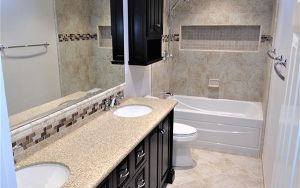 | 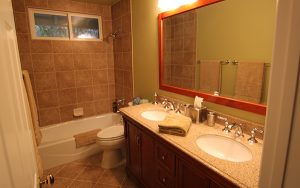 |
| After | After |
Before you run off and replace your bathtub, here are some very important things to think about. There are contractors who will not tell you any of this essential information. Knowing this information before you start will eliminate a bunch of expensive Change Orders after the job is started. Here is what you need to know.
When Considering How Much To Replace A Tub, Don’t Forget About the Bathtub Space
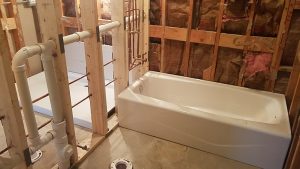 For the past 100 years, virtually all new home construction uses a 60-inch space for a bathtub. Bathtubs are installed during framing. Either 1/2-inch or 5/8-inch drywall locks it in place. What this means is that a 60-inch bathtub must be removed through a 59 or 58-inch space. That’s not going to happen! Conversely, you need to install a new 60-inch bathtub by moving it through a 58 or 59-inch space. This too, is not happening!
For the past 100 years, virtually all new home construction uses a 60-inch space for a bathtub. Bathtubs are installed during framing. Either 1/2-inch or 5/8-inch drywall locks it in place. What this means is that a 60-inch bathtub must be removed through a 59 or 58-inch space. That’s not going to happen! Conversely, you need to install a new 60-inch bathtub by moving it through a 58 or 59-inch space. This too, is not happening!
Removing a bathtub or tub/shower combination is typically achieved by cutting and breaking it up in place. There will be damage to the perimeter drywall to about 2 or 4-inches from the outside edges of the bathtub or tub/shower combination.
Many bathtub contractors will simply cover this damaged drywall by installing the tile over it. Bad idea. Although it is perfectly acceptable to allow the tile to extend roughly 1-inch over the drywall to bridge the transition between the tub and drywall, extending 2-4 inches is not. Why? Because it is very likely over time you will get dangerous and destructive mold, mildew, and rot behind the tile. It is against building code and best tile practices to install wet area tile over drywall. All tile and grout, regardless of quality will absorb moisture. Therefore, drywall behind the tile gets wet and the damage starts. For a really good discussion on proper tile installation for a bathtub or shower, see Remodeling a Bathtub and How Do You Remodel a Shower.
How Much To Replace A Tub Includes Thinking About Flooring
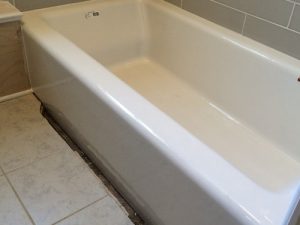 When removing a bathtub, there will be damage to the floor where it meets the tub. It does not matter if its tile, vinyl, wood, or carpet. Tile, older vinyl, and wood are the most difficult. A tile or wood floor installed against a cast iron or steel bathtub is not coming out without some adjustment.
When removing a bathtub, there will be damage to the floor where it meets the tub. It does not matter if its tile, vinyl, wood, or carpet. Tile, older vinyl, and wood are the most difficult. A tile or wood floor installed against a cast iron or steel bathtub is not coming out without some adjustment.
Most builder installed tubs (tract housing) are smaller than replacement tubs. Prior to 2010, tract housing tubs and one-piece tub/shower combinations were generally 25-30 inches wide by 60 inches long. Replacements for both today are generally 30-32 inches wide by 60 inches long.
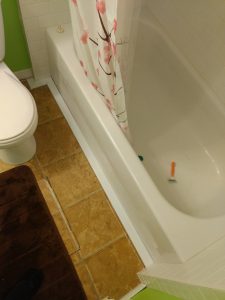 When there is a gap between the old flooring and the new tub, some of the “fixes” contractors will use include a heavy blob of caulk, wood or vinyl quarter round trim, grout, and thin vinyl strips glued to the floor.
When there is a gap between the old flooring and the new tub, some of the “fixes” contractors will use include a heavy blob of caulk, wood or vinyl quarter round trim, grout, and thin vinyl strips glued to the floor.
The bigger issue is when the width of the new tub exceeds the old space. Replacing a 30-inch tub with a 32-inch tub is an example. If the floor is concrete, this makes adjusting the flooring more difficult. Tile, vinyl, and wood gets brittle with age. When installed over concrete, it splits, shatters, and breaks easily. Tile and wood installed directly over concrete without a Crack Isolation Sheet (CIS) and Moisture Barrier (MB) makes adjusting difficult. There is also no good method to cleanly cut these products next to walls.
Although it is always the client’s decision since it is their money, replacing the tub and leaving the old floor will never look good. Moreover, the flooring helps keep the tub locked in place. This is especially true for fiberglass, acrylic, and steel tubs. Even small movements in the tub can damage the drain and overflow systems. Small leaks develop and over many years, mold, mildew, rot, and insect damage can cause very expensive damage to your home. The off gassing of pathogens that become airborne from these conditions can create serious respiratory and other health conditions. When replacing a bathtub, it is always smart to replace the floor.
Don’t Forget About the Bathroom Fixtures When Replacing the Tub
This is typically the biggest surprise to clients when they are thinking about replacing the tub. Look at the below pictures. What do you see that might create a problem when trying to remove the old tub? Conversely, what can you see as even bigger problems trying to get a new 60-inch-long bathtub installed?
|
|
|
| Before – All Tubs are 60″ Long | ||
|
|
|
| After – All Tubs Are 60″ Long | ||
Here are the challenges:
- Drywall on each side
- Cabinet, countertop, and banjo over the toilet
- Cabinet wall mirror
- Toilet
- Towel Bars
- Light over the cabinet sink
- Entry door, jams, and door knob
- Sink faucet
- Baseboards
- Personal items and pictures
Look at how the tub sits behind all these items. Depending on the size of the bathroom, many, if not all these items, must be dispatched to remove and install a new tub.
Bathtub Depth and Width
Most people don’t think about the depth and width of the tub. Rather, they focus on the length. There are two major complaints I get regarding existing tubs. Firstly, the number one complaint is the length. Secondly, the water coverage (when in the tub, the water does not cover their body from neck to toe). The reason for this is most clients shop on line and at home improvement stores, focusing on price. These retailers emphasize the length and price in their descriptions. Tubs that are 60 inches in length are available in widths ranging from 25 to 45 inches. Depths for these tubs range from 13 to 16 inches and  greater.
greater.
If you are looking for a comfortable soaking tub, the width needs to be at least 32 inches and the depth 14 inches. No 60-inch tub is going to be ideal for soaking unless it’s for a child. For true relaxation, the length must be 66 inches or greater.
The above suggested tub size minimums may be insufficient for your body type. After performing the measurement exercise below, you may need to consider other options.
How Much To Replace A Tub? Take Careful Measurements
Enjoying a comfortable and relaxing soaking experience in a tub begins with you. It’s all about your unique length, width, and depth.
Before shopping for a tub, take your measurements. Using a tape measure, perform this measurement exercise and see if the tub size minimums work for you. All measurements should be performed completely undressed on your back.
- Width – Open the tape measure to 32 inches on the floor. Lay in the middle of the tape measure with your arms in a relaxed position by your sides. Position the tape measure about where your elbows are. If you do not have at least 4 inches beyond each relaxed elbow, you need a wider tub. The
 width of a tub is advertised and measured from edge to edge across the top. For relaxed soaking, you are interested in the width across the bottom of the tub.
width of a tub is advertised and measured from edge to edge across the top. For relaxed soaking, you are interested in the width across the bottom of the tub. - Length – Extend the tape measure to 66 inches on the floor. Lay next to it with the bottom of the tape measure about 2 inches beyond your feet. From your height, subtract 18 inches. What this means is for a person who is 70 inches tall, the minimum basin tub size is 52 inches. Tub length is advertised and measured across the top from outside flange to outside flange. For comfortable soaking, you are interested in the bottom basin length.
- Depth – Lay on the floor. Open the tape measure to 14 inches. Measure from the floor to the highest point across your chest. Tub depth is advertised and measured from the bottom of the tub to the top. You are interested in the depth from the bottom of the tub to the bottom of the drain overflow.
For more information on selecting the best bathtub for you, see What Is the Best Kind of Bathtub to Get?
Bad Tub Installations
 I can’t tell you how many folks have called and asked me to fix the installation of their new bathtub performed by “the other guy”. Some of the things I find are framing that’s been dangerously cut away along with cracked and stressed bathtubs from being forced into place. I often find damaged tubs that have acrylic spray texture applied – covering up the damage. Of these newly installed tubs, close to 6 out of 10 have slow to moderate leaks.
I can’t tell you how many folks have called and asked me to fix the installation of their new bathtub performed by “the other guy”. Some of the things I find are framing that’s been dangerously cut away along with cracked and stressed bathtubs from being forced into place. I often find damaged tubs that have acrylic spray texture applied – covering up the damage. Of these newly installed tubs, close to 6 out of 10 have slow to moderate leaks.
I have never found one of these budget installs where the tub is level and correctly installed. All were damaged during installation. In roughly 50% of the installs, I find that the plumbing valve was not replaced (customers say they paid for a new valve). I also find that the plumbing work that was performed is horribly wrong. The tile work is a whole other conversation. It is never correct.
When considering replacing your bathtub or remodeling your bathroom, please read How to Find a Good Contractor and save yourself a lot of money and frustration.
I hope this article on “How Much to Replace a Tub” is helpful as you consider replacing your bathtub.
Always Hire a Reliable and Dependable Contractor to Remodel your Bathroom
 Always work with a trustworthy contractor like DAD’s Construction. We are experts in bathroom remodeling who can manage projects in an efficient manner. DAD’s Construction will do everything to minimize the possibility of change orders. Our team will make sure we have all the necessary information to prepare a proposal that meets your requirements. Rest assured that we will provide you with a detailed, by line-item contract. We will make sure that the contents of this agreement are properly and clearly communicated to you. If you have questions or need updates regarding your project, we will always answer your inquiries.
Always work with a trustworthy contractor like DAD’s Construction. We are experts in bathroom remodeling who can manage projects in an efficient manner. DAD’s Construction will do everything to minimize the possibility of change orders. Our team will make sure we have all the necessary information to prepare a proposal that meets your requirements. Rest assured that we will provide you with a detailed, by line-item contract. We will make sure that the contents of this agreement are properly and clearly communicated to you. If you have questions or need updates regarding your project, we will always answer your inquiries.
How Can I Receive More Information?
If you would like more information on enjoying the best bathtub, bathroom, kitchen, and interior remodeling experience in Orange County, call Dan at (949) 380-0177 or at dan@dadsconstruction.com for a free in home consultation. DAD’s serves all of South Orange County California. This includes Lake Forest, Mission Viejo, Foothill Ranch, Portola Hills, Ladera Ranch, Irvine, San Clemente, Dana Point, San Juan Capistrano, Rancho Santa Margarita, Coto de Caza, Dove Canyon, Laguna Niguel, Laguna Hills, Laguna Beach, Newport Beach, and Aliso Viejo.
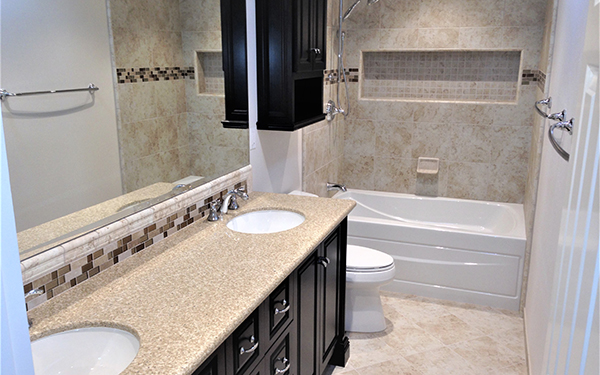
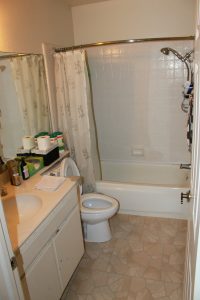
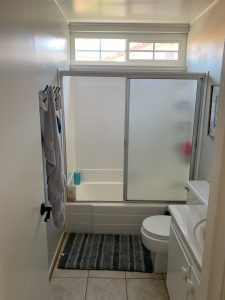
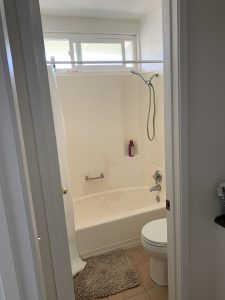
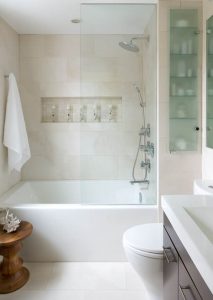
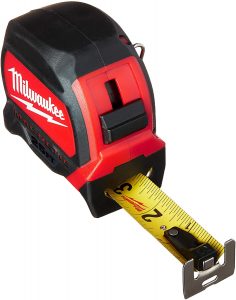 width of a tub is advertised and measured from edge to edge across the top. For relaxed soaking, you are interested in the width across the bottom of the tub.
width of a tub is advertised and measured from edge to edge across the top. For relaxed soaking, you are interested in the width across the bottom of the tub.